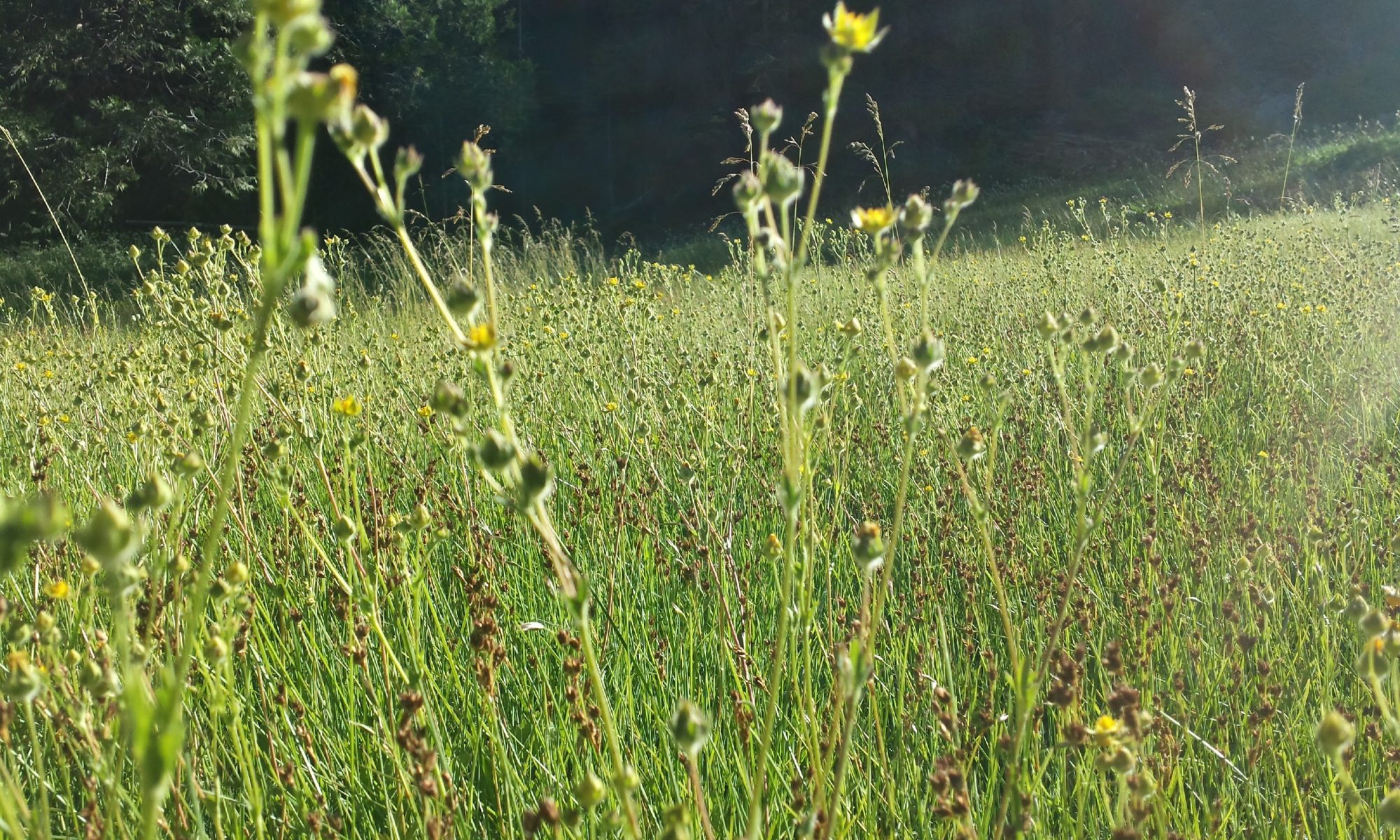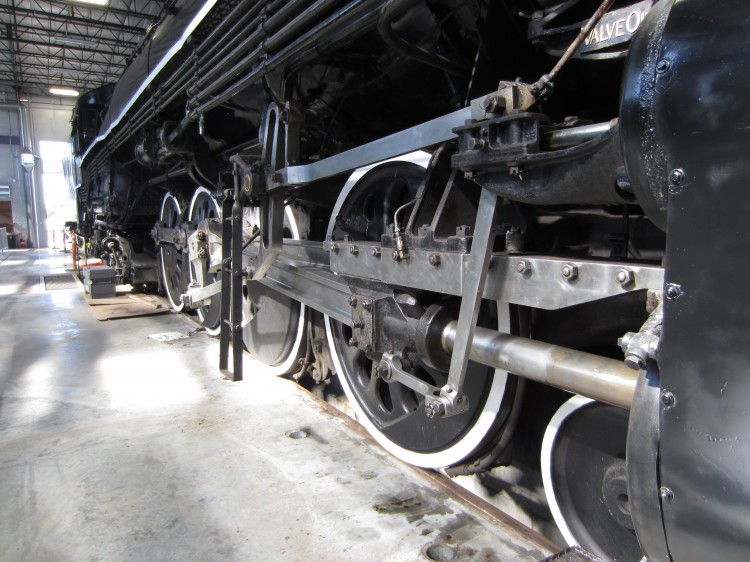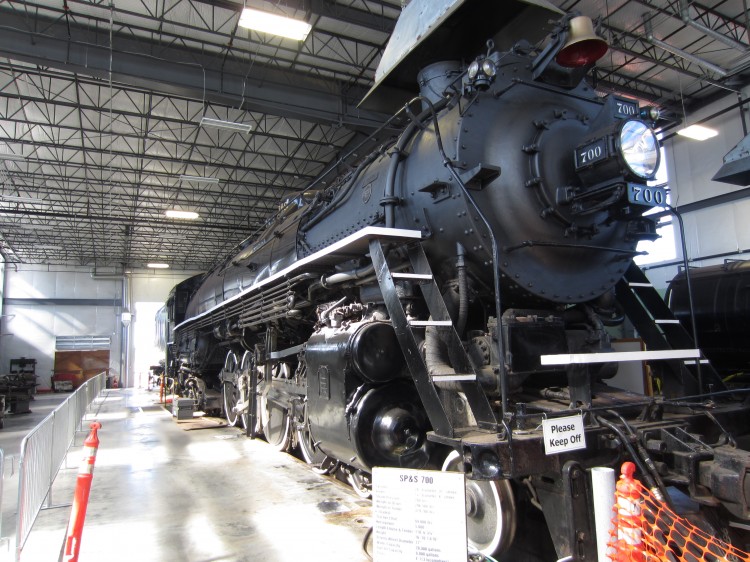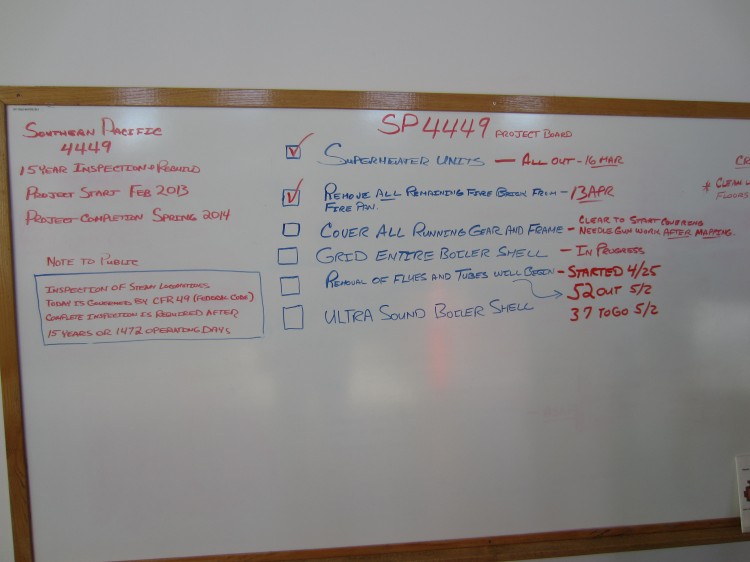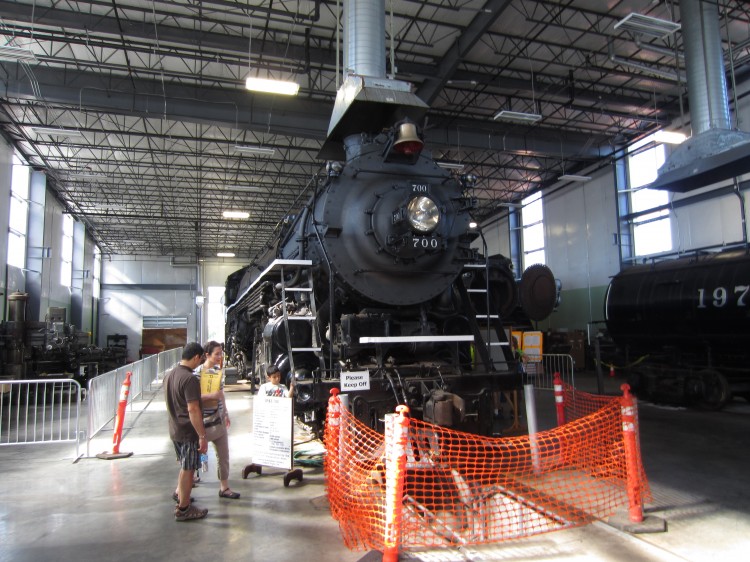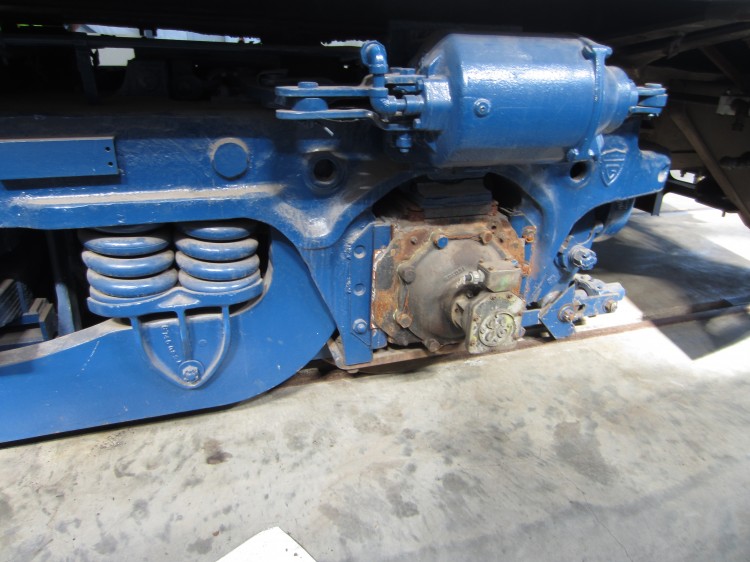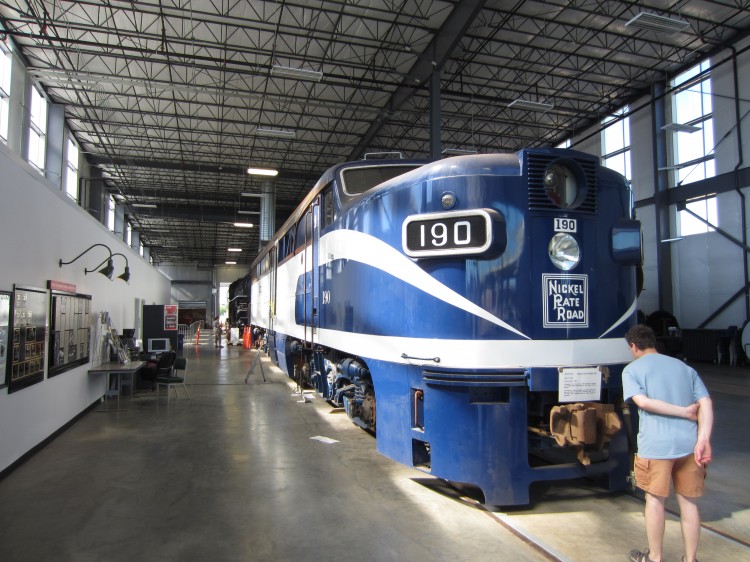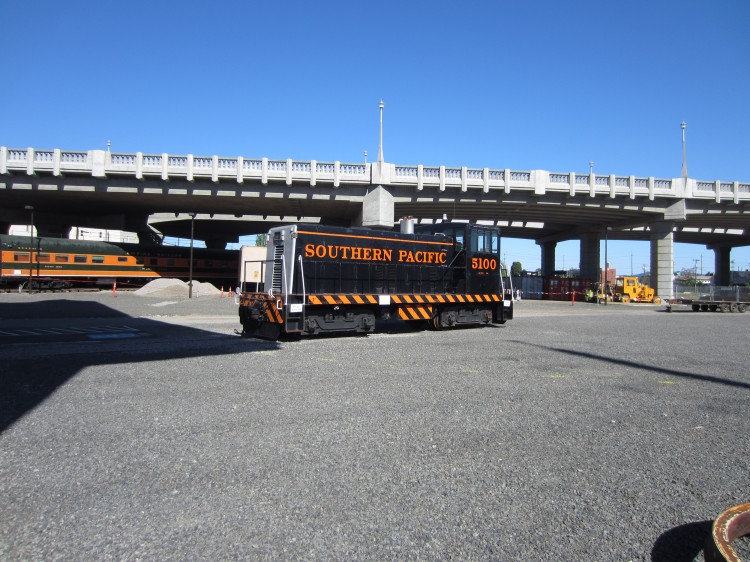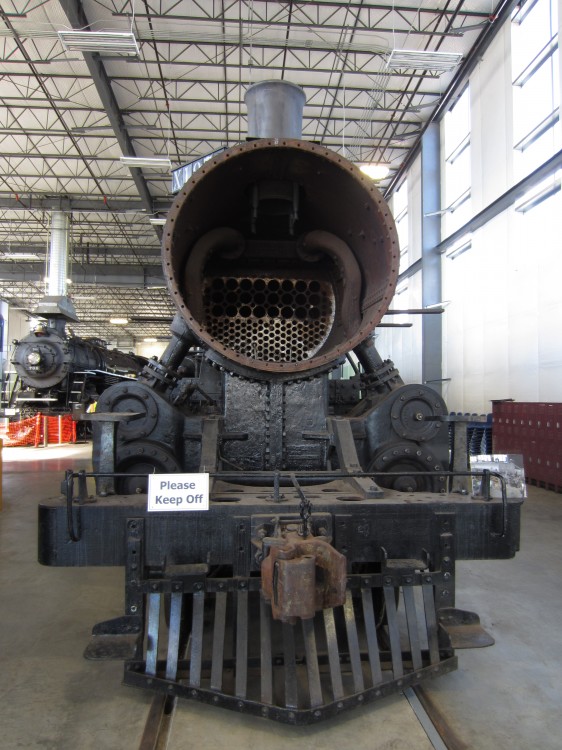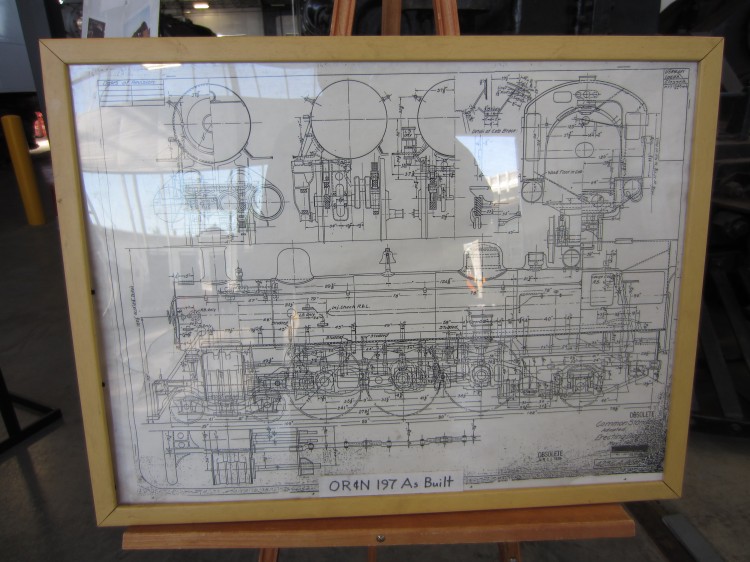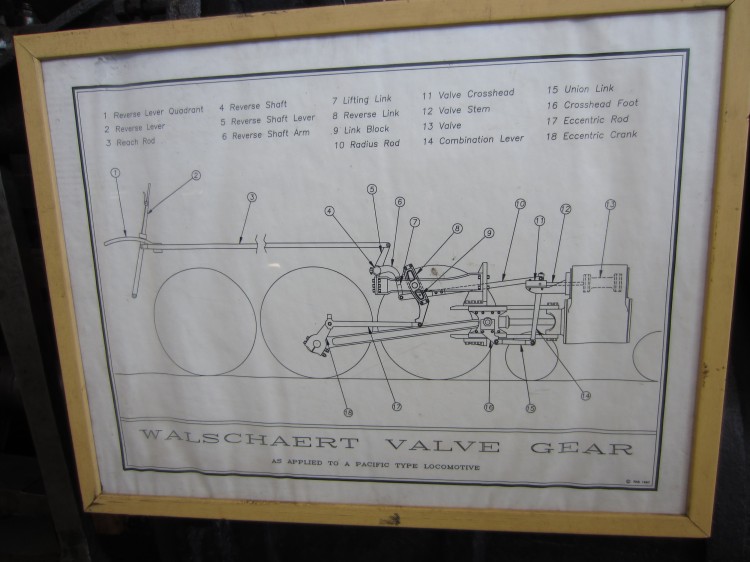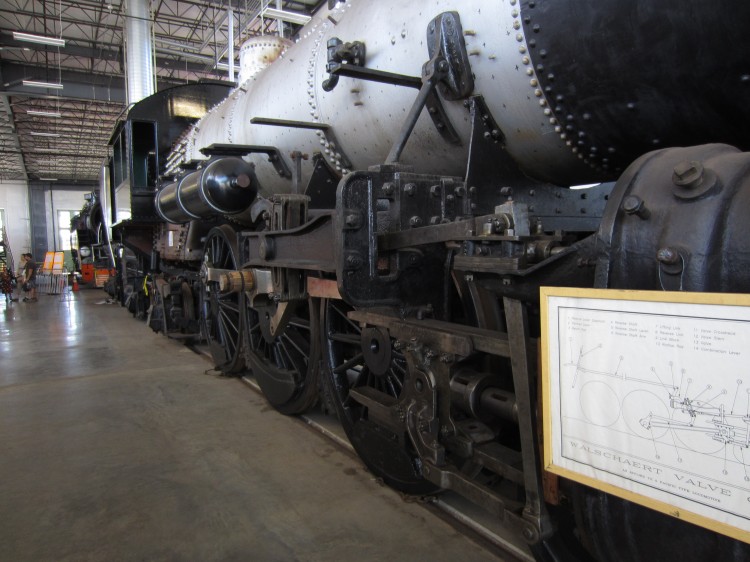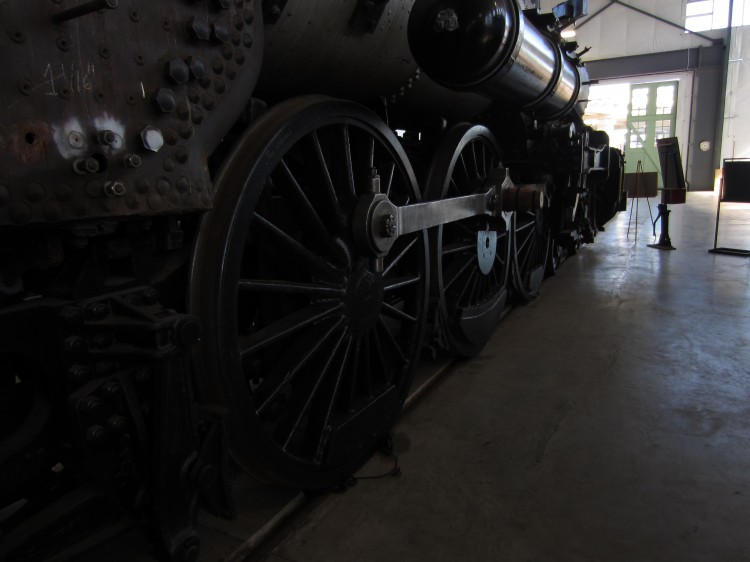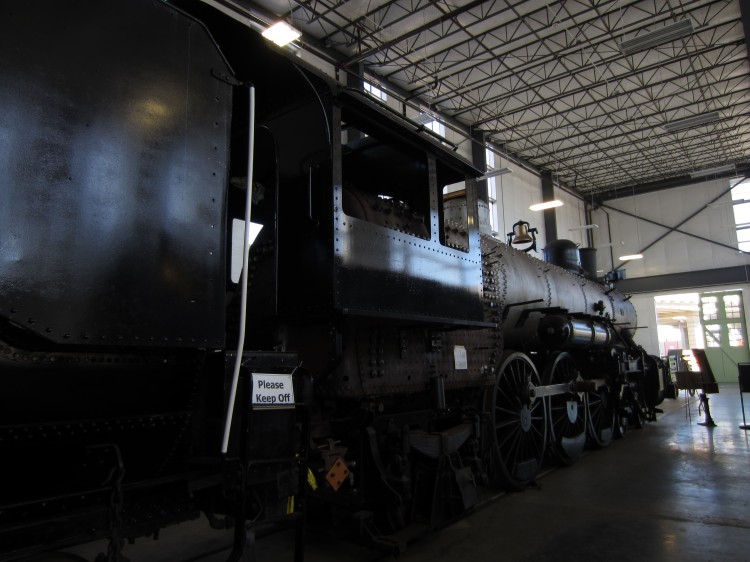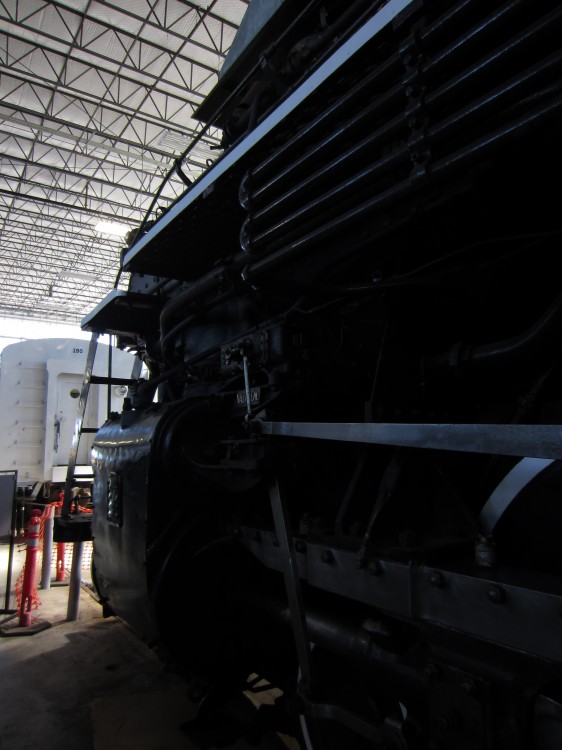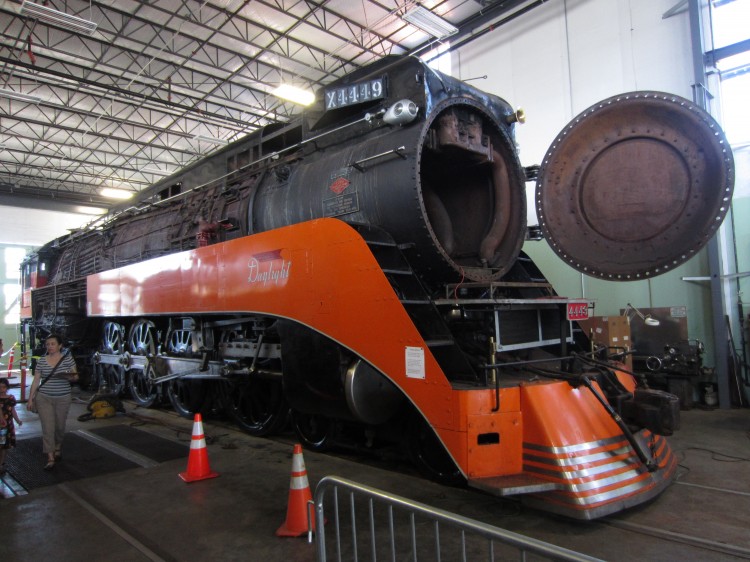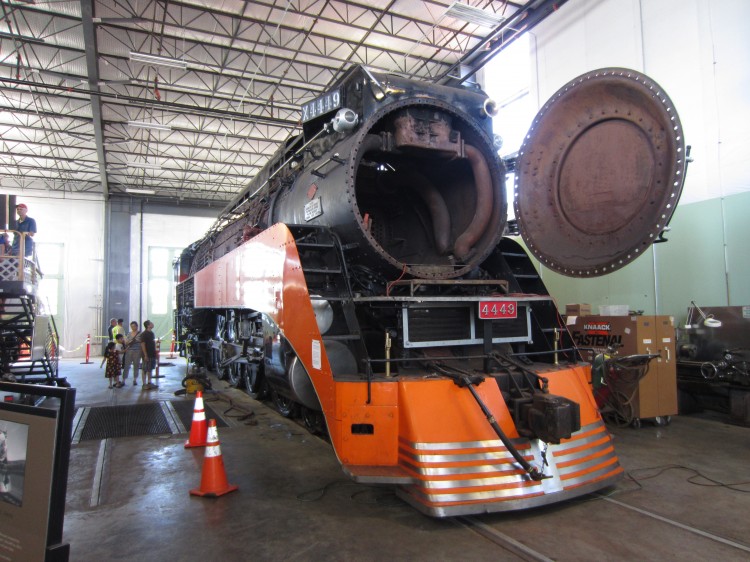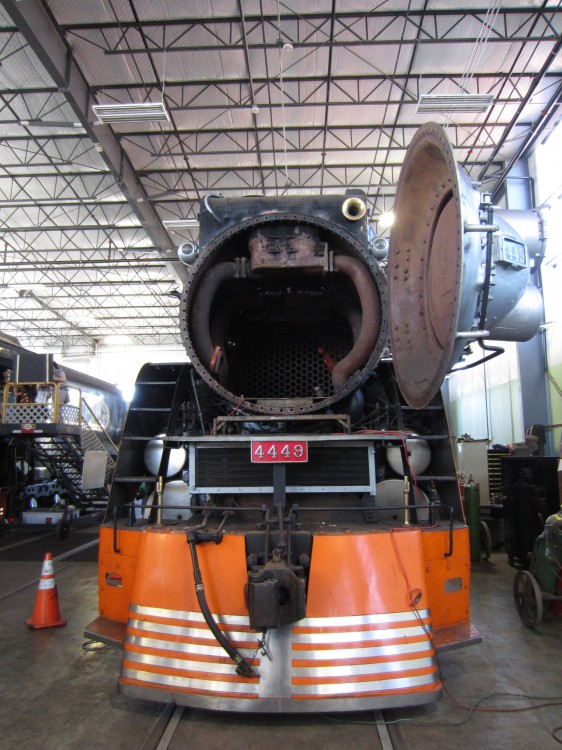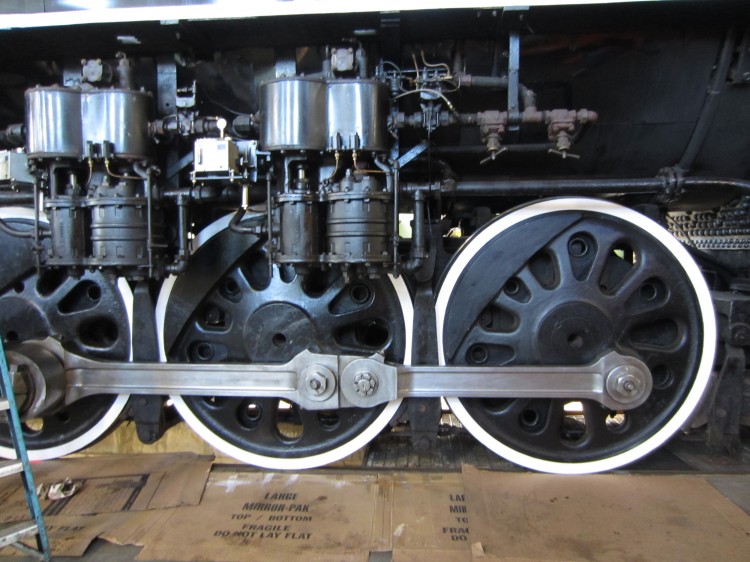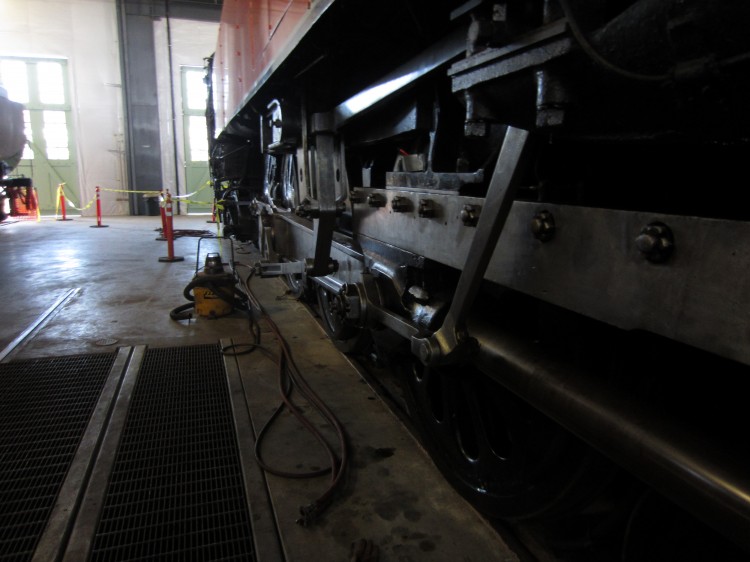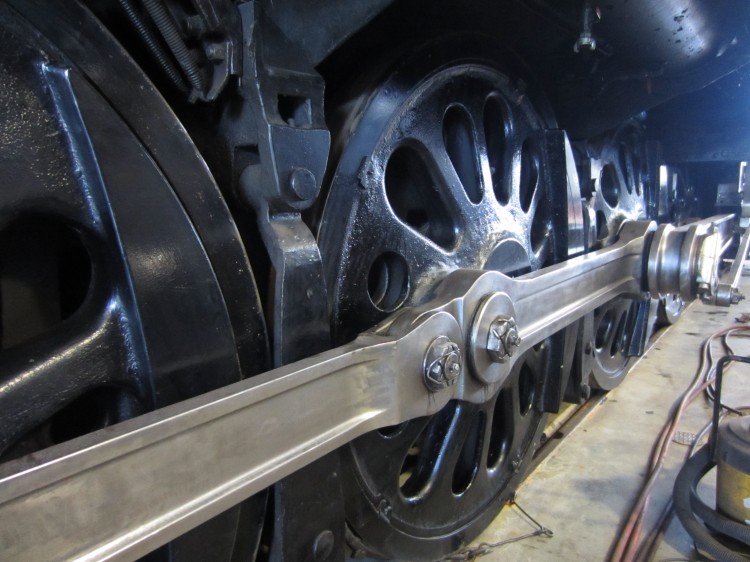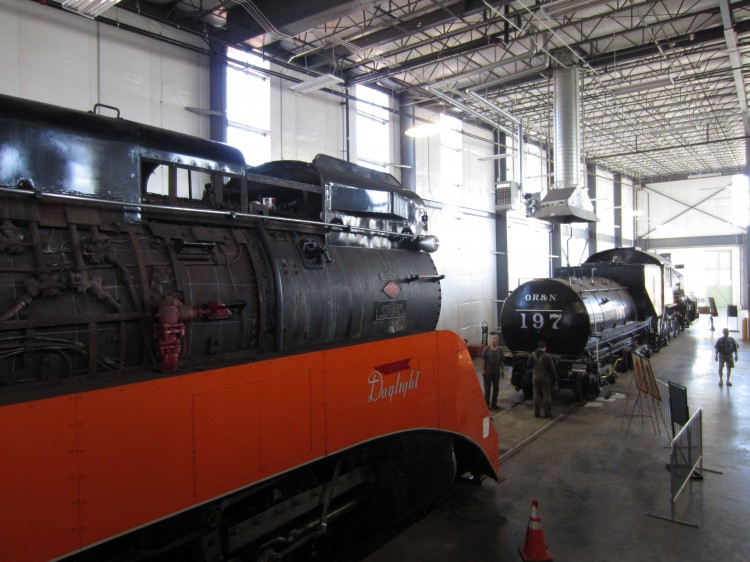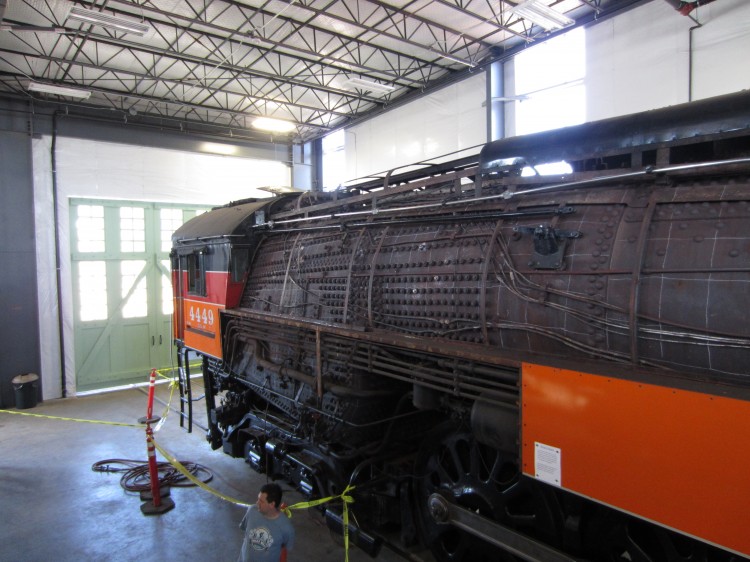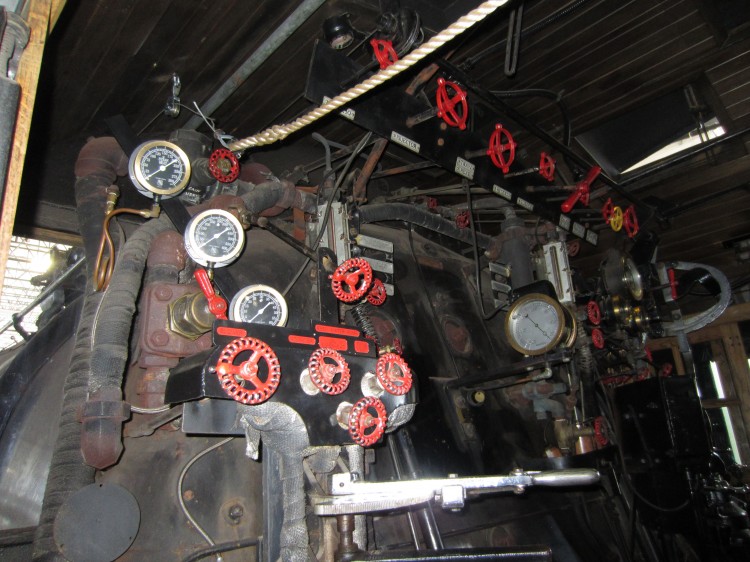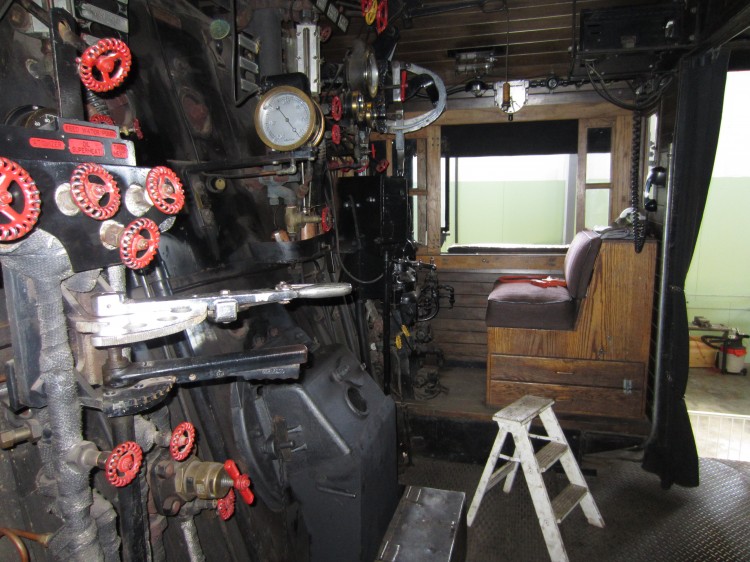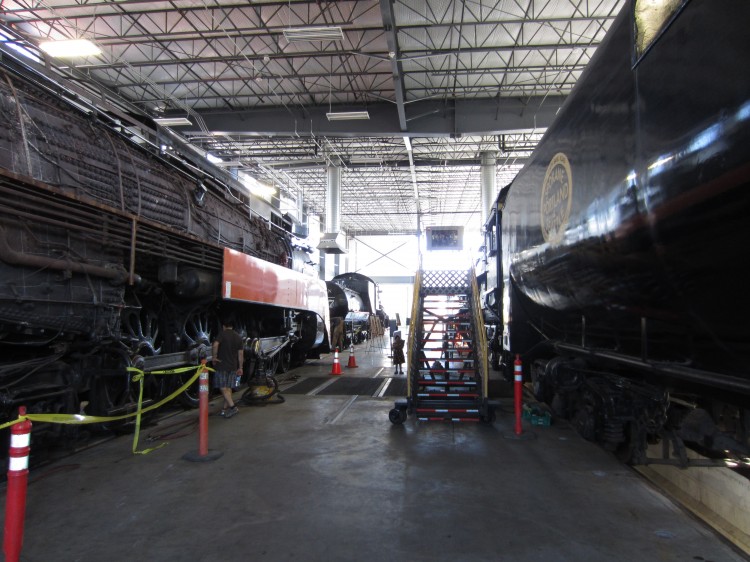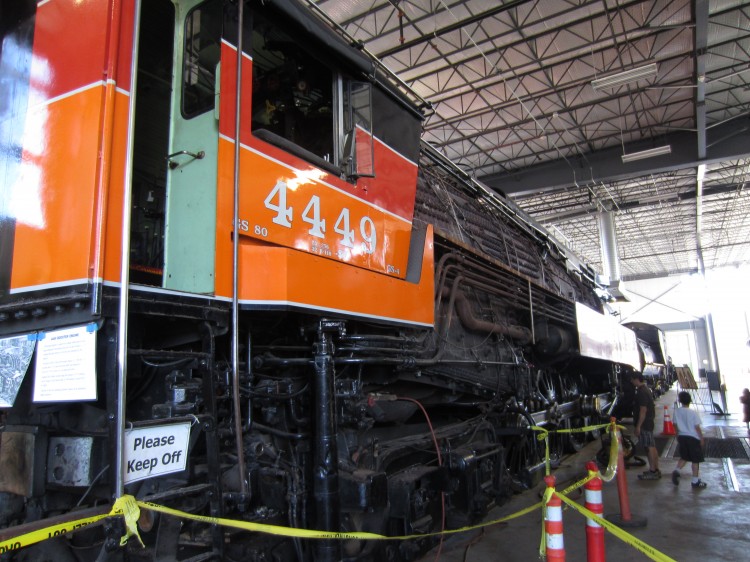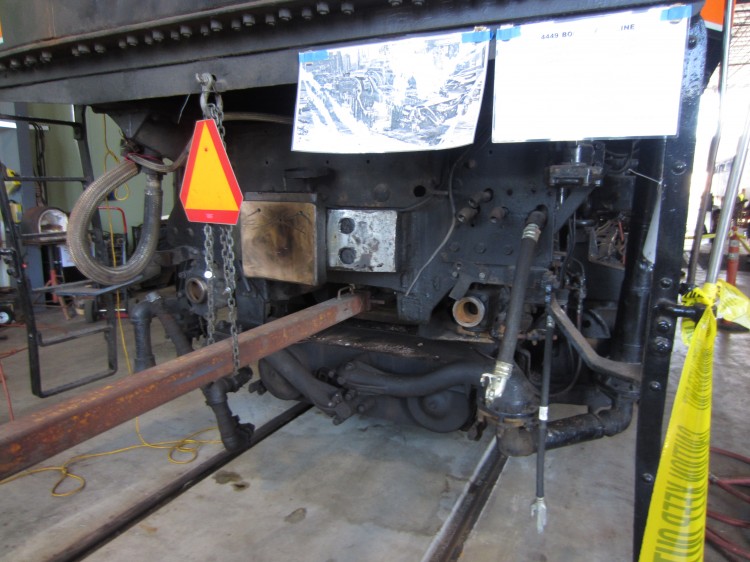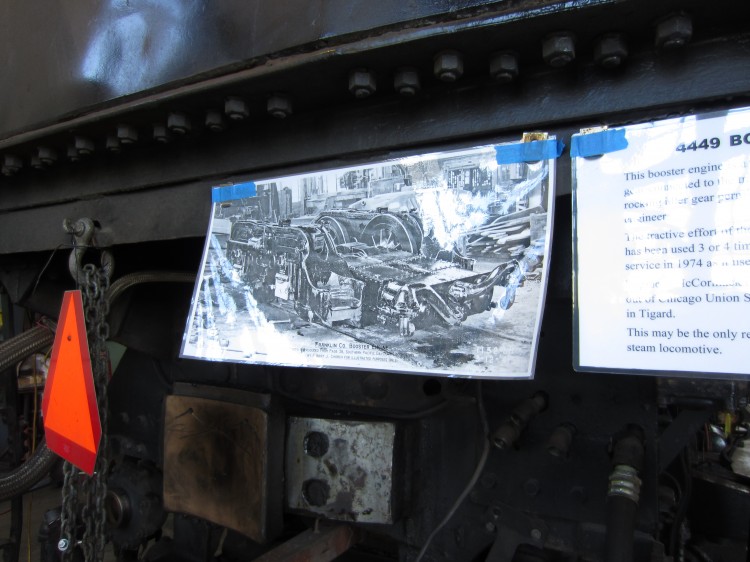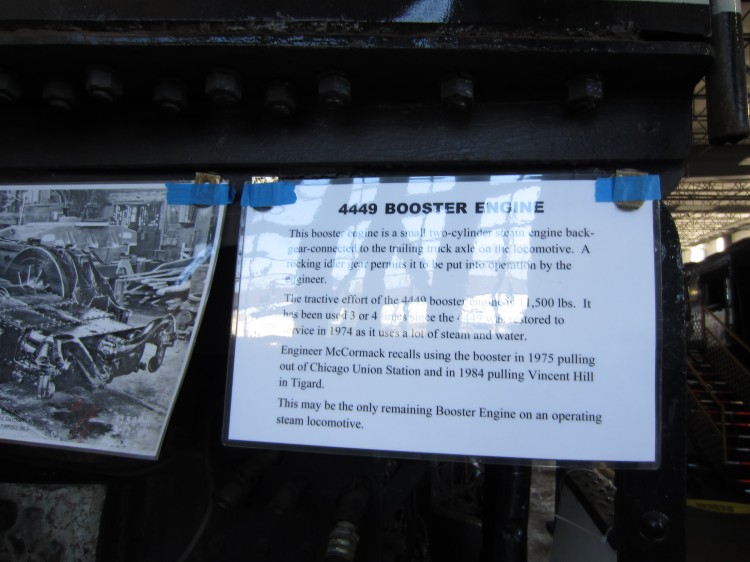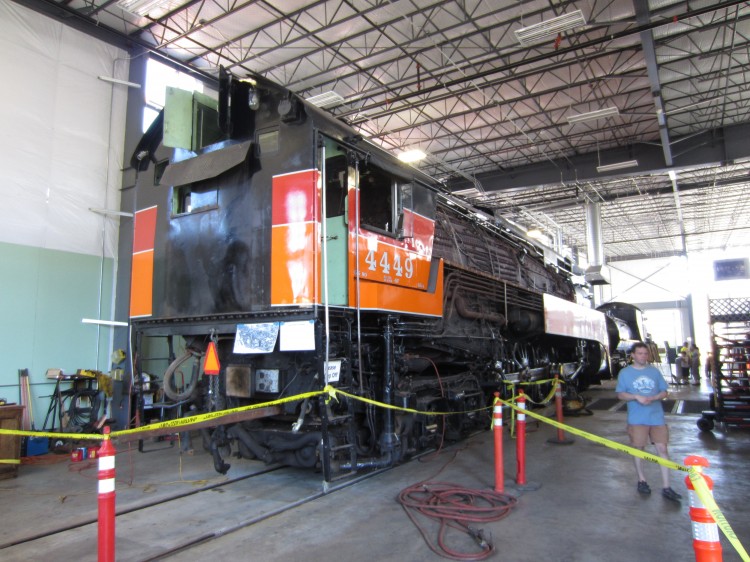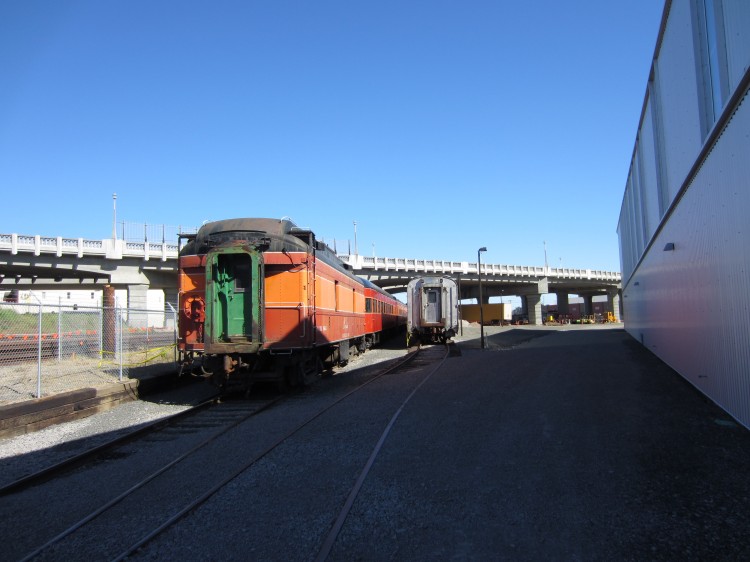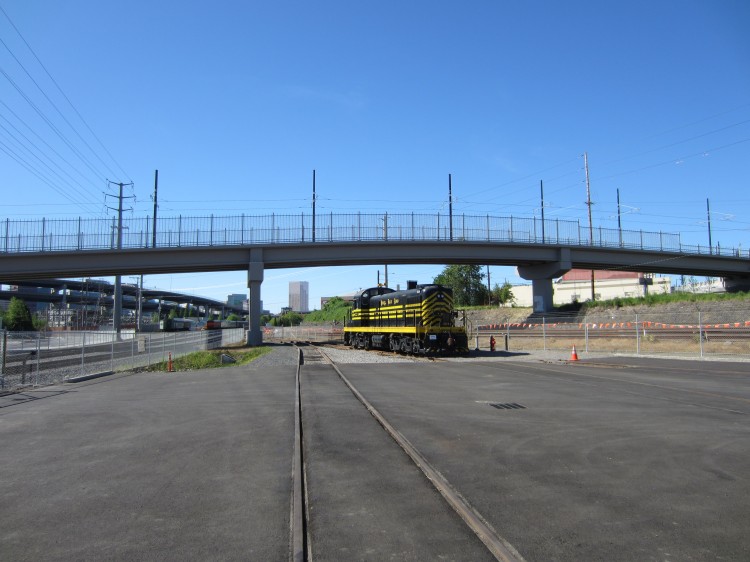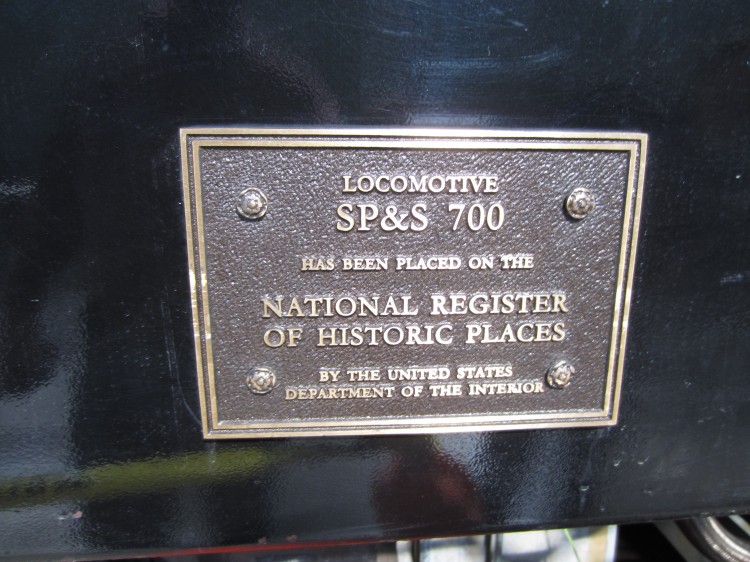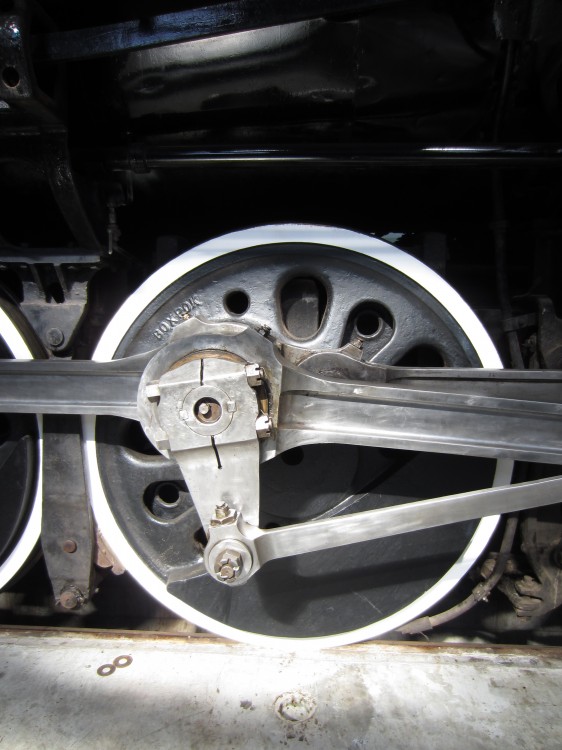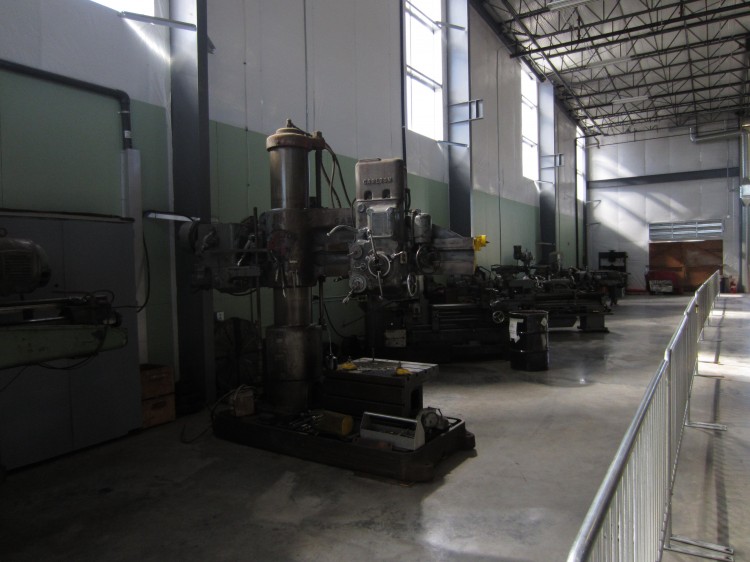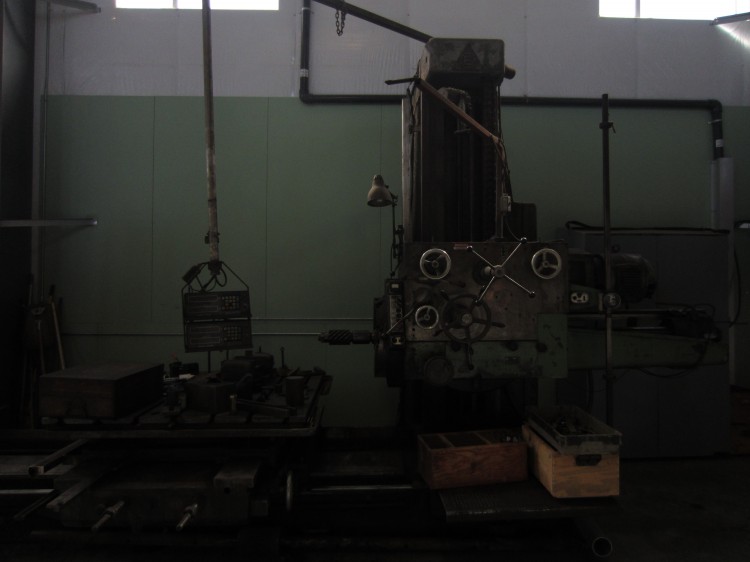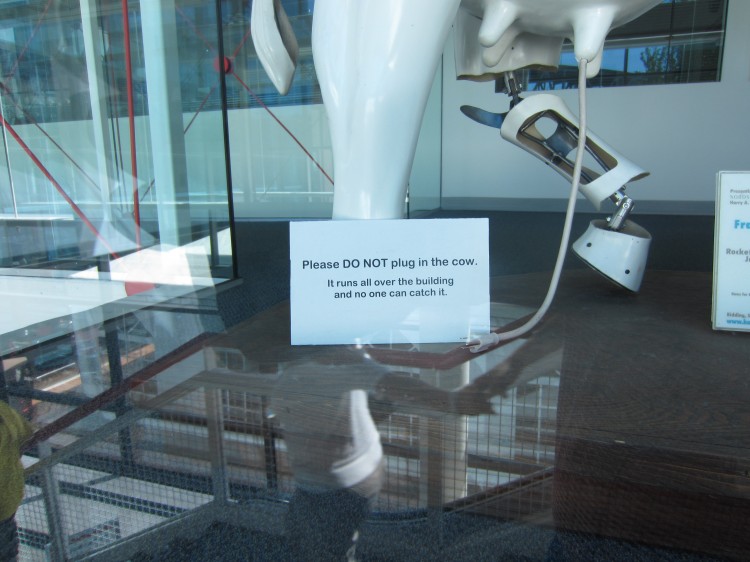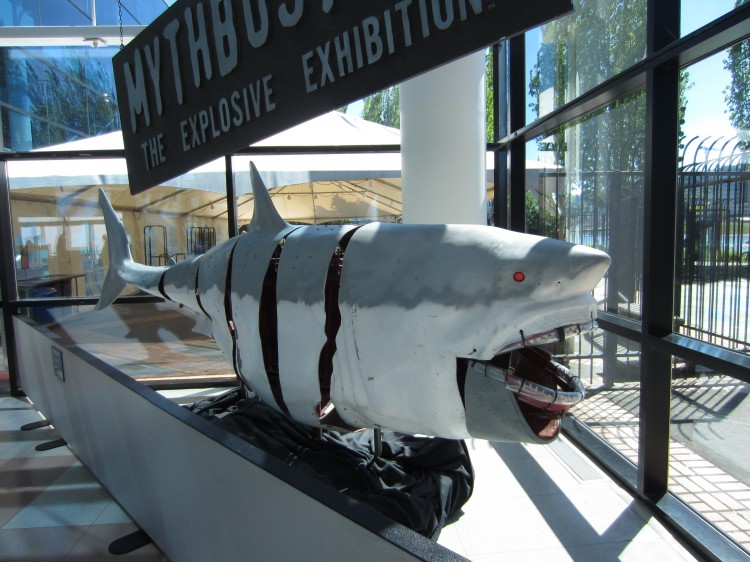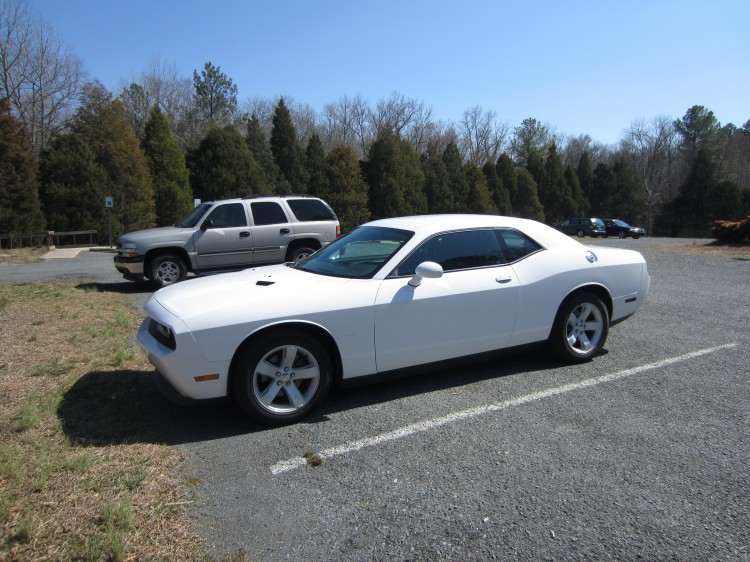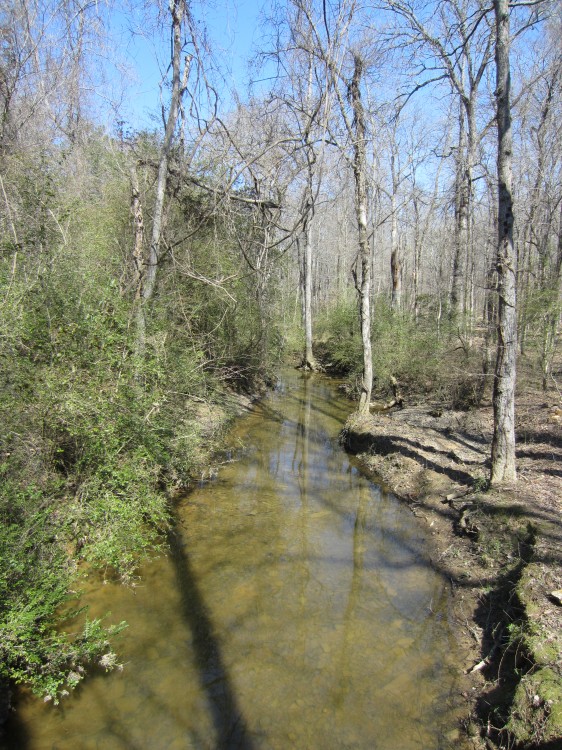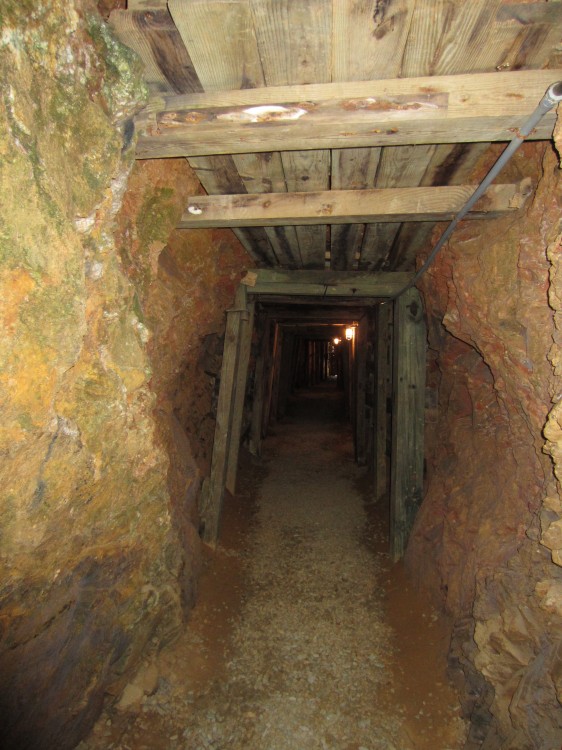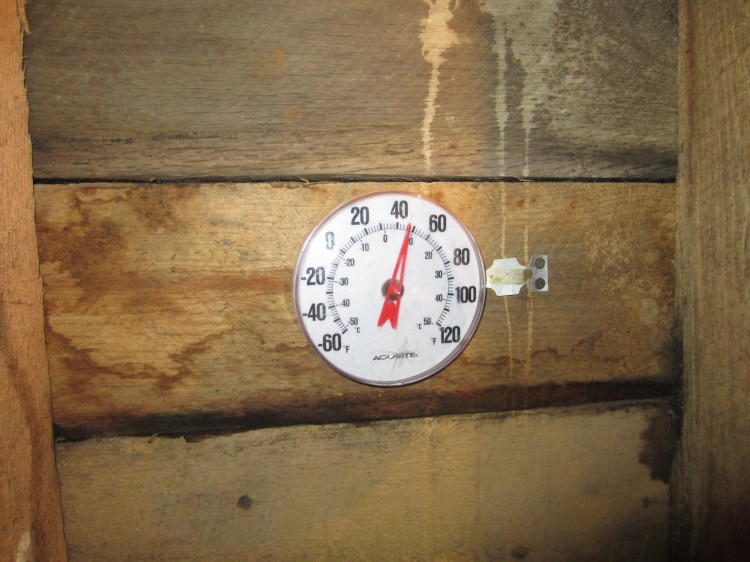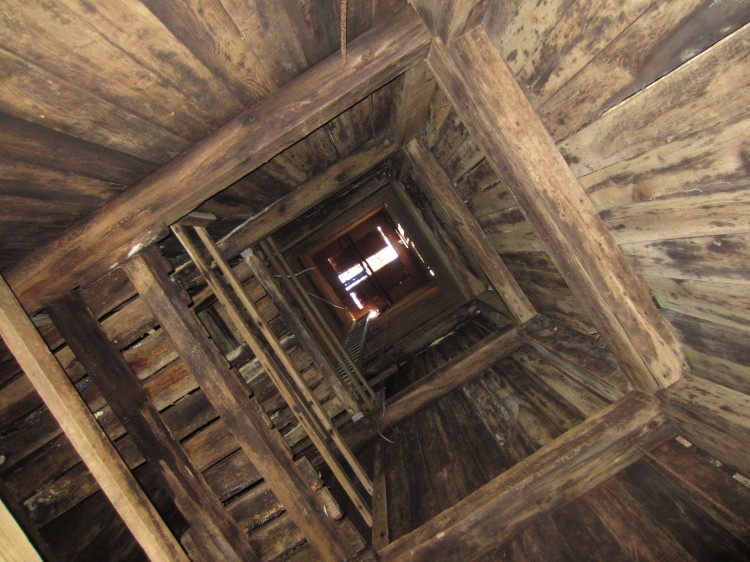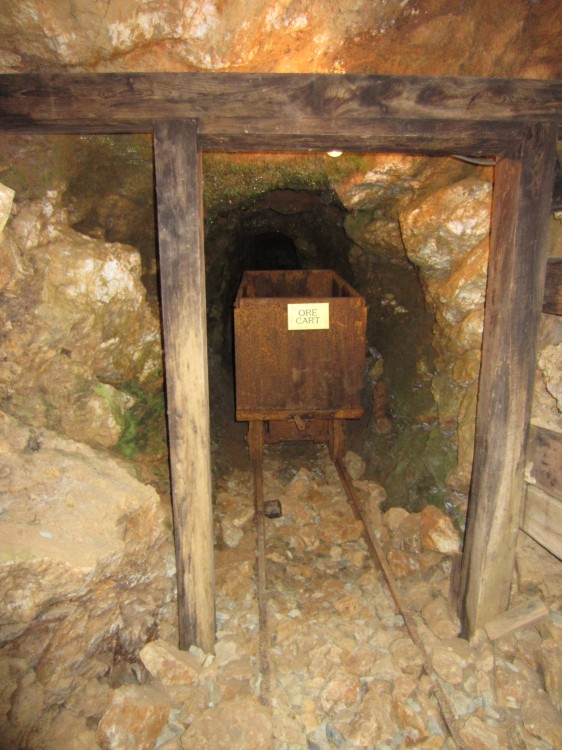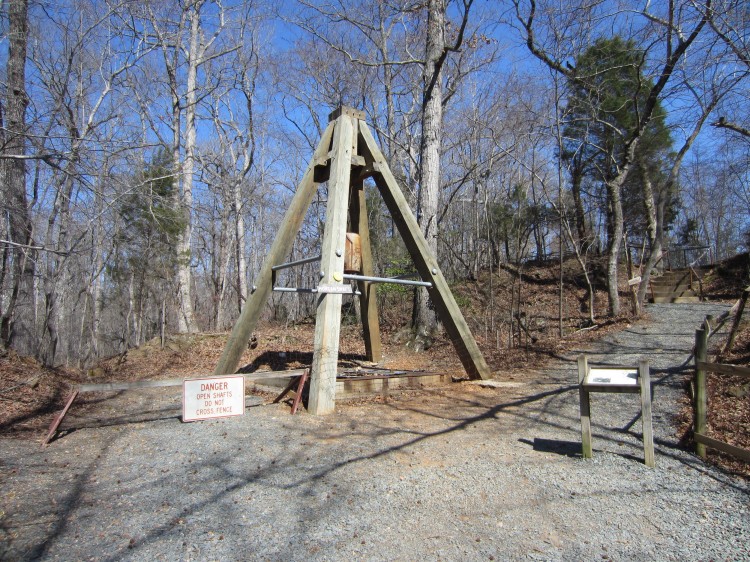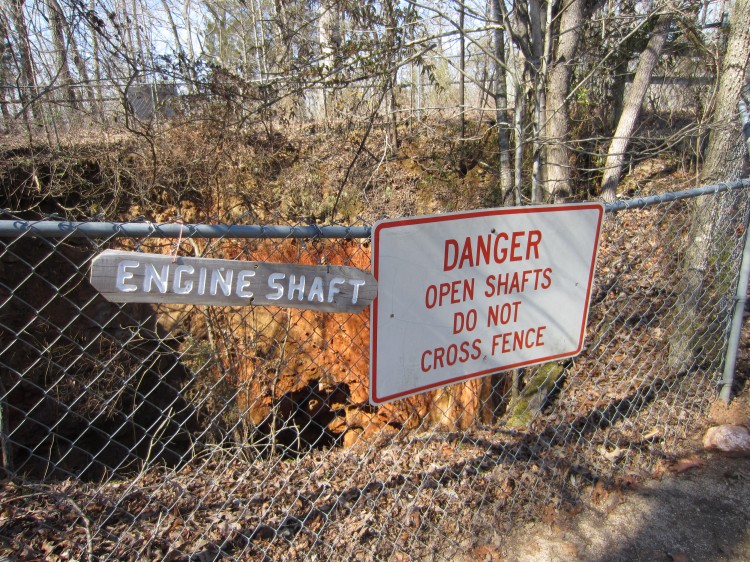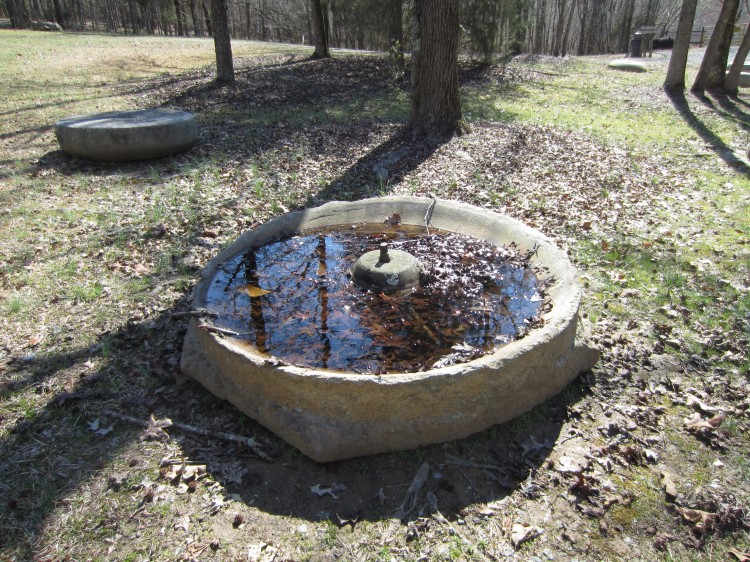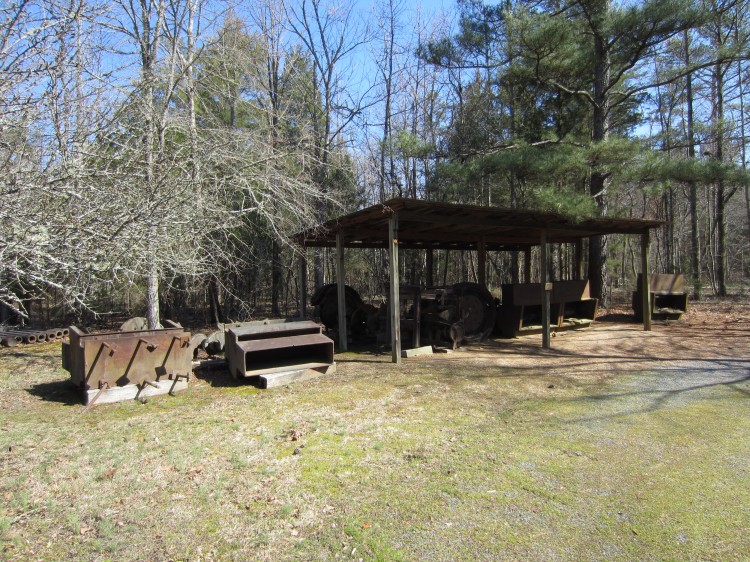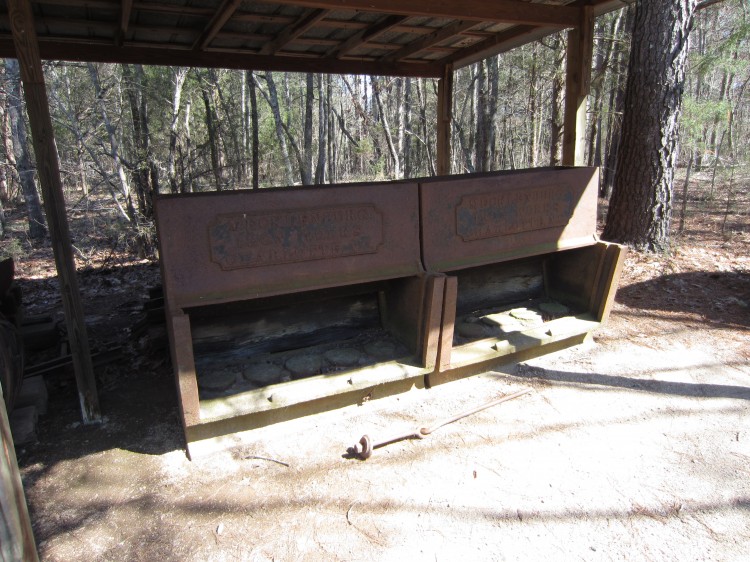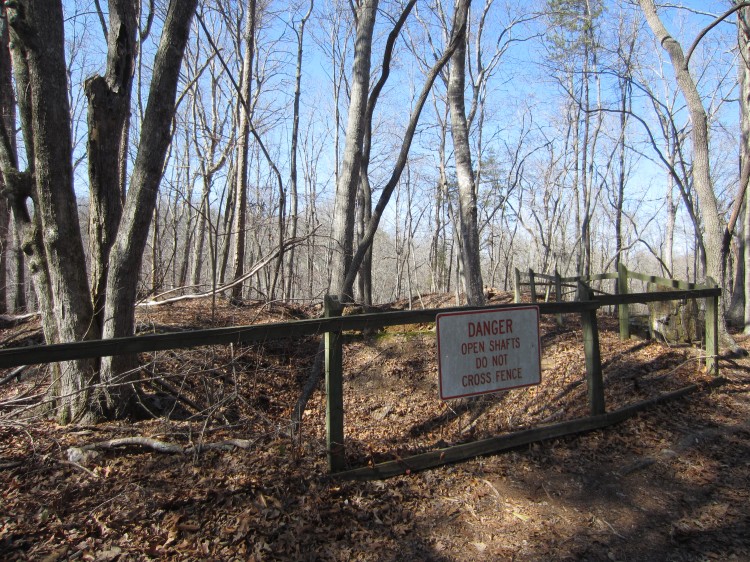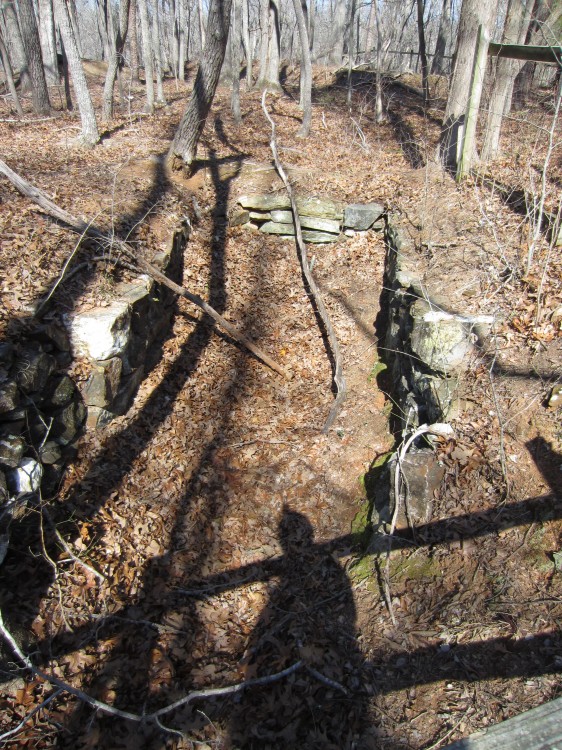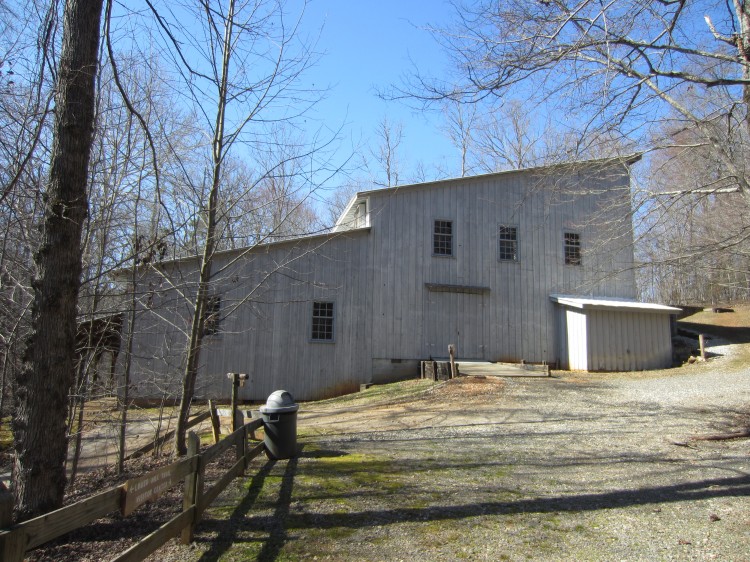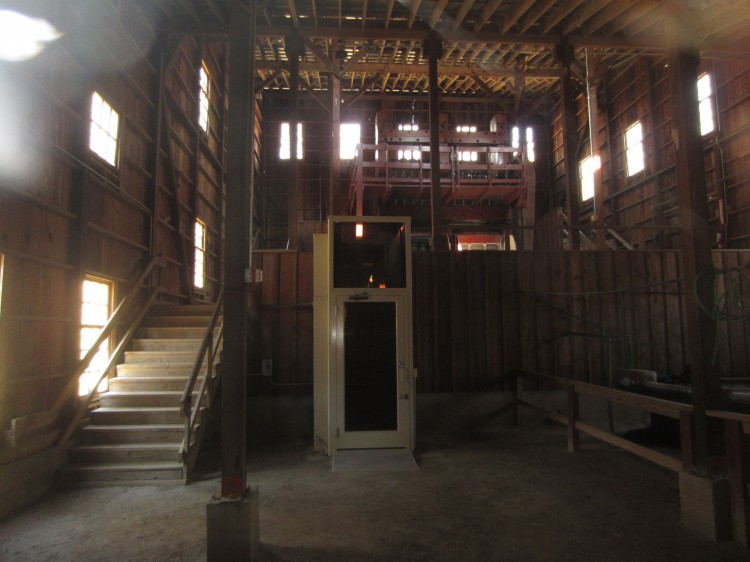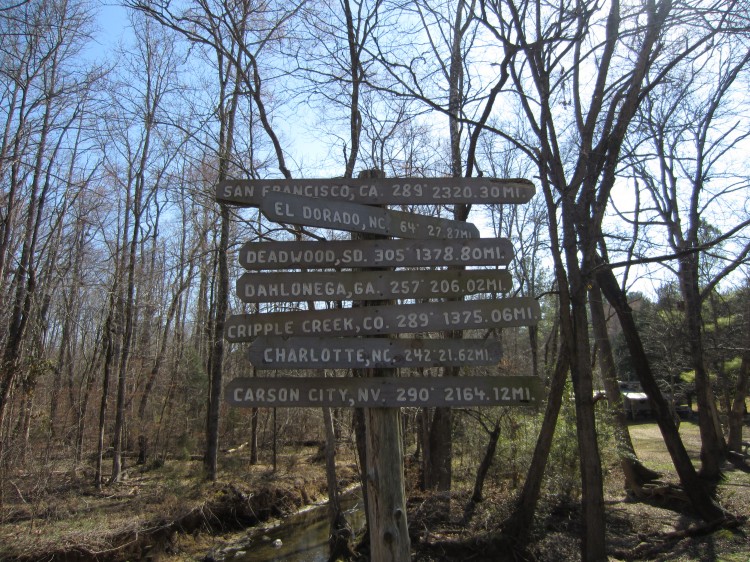After visiting OMSI, Nathan and I walked over to the new Oregon Rail Heritage Center where the SP4449 Daylight, the SP&S 700, and the OR&N 197 (among other engines) now live. The 700 is in the photo above. If you’ve never walked around a large steam engine, it is hard to comprehend just how large these beautiful pieces of machinery truly are. Were I born 100 years earlier, I no doubt would have been a locomotive engineer.
The 700 slumbering in her new engine shed.
The SP4449 work list.
Running gear on an old GE Diesel Electric locomotive that also lives in the new Oregon Rail Heritage Center.
A little diesel switcher sitting out in the yard.
The OR&N 197 is in the middle of a full restoration job.
The SP4449 Daylight is in the middle of an overhaul. Every rivet and every weld has to be inspected. All of the metal that holds in the mighty pressure of her boilers has to be checked for signs of wear and aging. The last thing anyone would want would be a boiler explosion on this grand old locomotive.
The space in the front of the engine is big enough to live inside!
Drive wheels on the SP&S 700.
SP4449 drive wheels.
Looking into the cab of the SP&S 700.
The booster engine lives in the rear wheels of the SP4449.
A picture of the booster engine outside of the SP4449.
The text from the above image:
4449 Booster Engine
This booster engine is a small two-cylinder steam engine back-gear-connected to the trailing truck axle on the locomotive. A rocking ilder gear permits it to be put into operation by the engineer. The tractive effort of the 4449 booster engine is 11,500 lbs. It has been used 3 or 4 times since the 4449 was restored to service in 1974 as it uses a lot of steam and water. Engineer McCormack recalls using the booster in 1975 pulling out of Chicago Union station and in 1984 pulling Vincent Hill in Tigard. This may be the only remaining booster engine on an operating steam locomotive.
Some of the SP4449 and SP&S 700 rolling stock out in the yard.
Another diesel engine sitting in the yard. Several people appear to have their hobby engines stored at the facility.
The National Register of Historic Places dedication plaque on the SP&S 700.
Old machine tools that remind me of the tools at Steph’s work in Sydney. Heather and I saw similar tools at the B&O Railroad Museum.
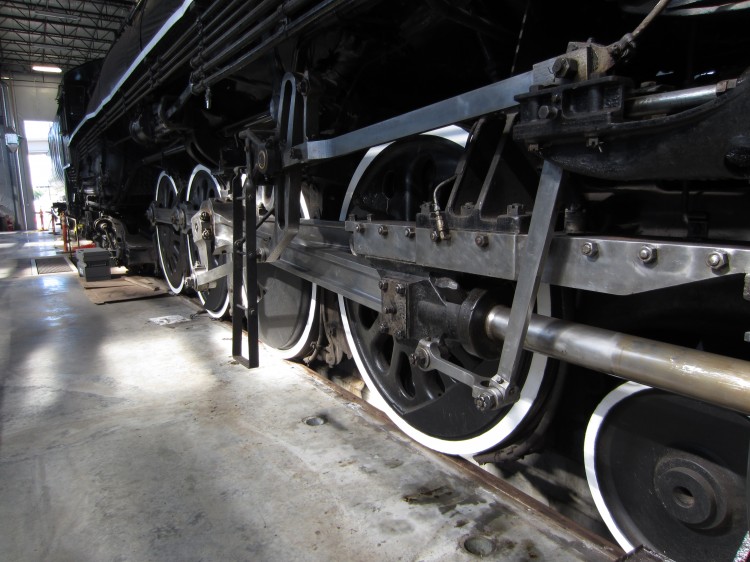 One last look at the SP&S 700’s drive wheels.
One last look at the SP&S 700’s drive wheels.
